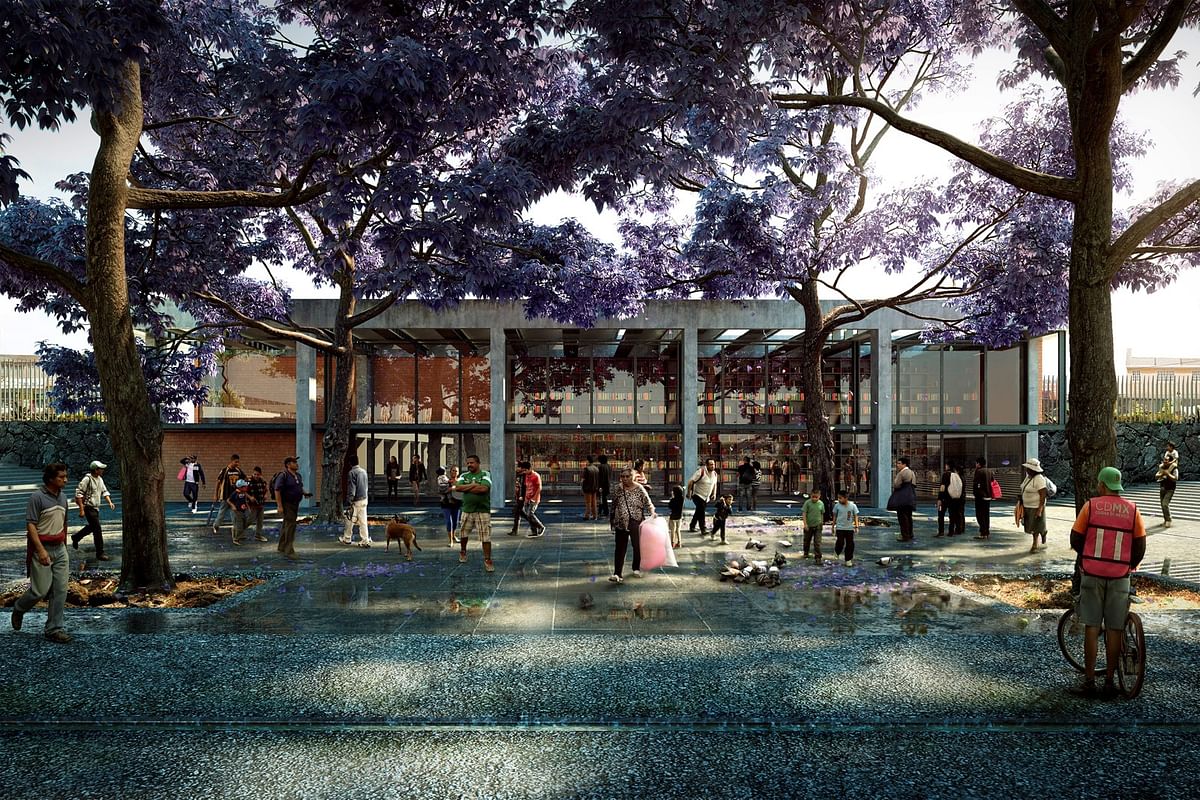
Winners of the 2017 LafargeHolcim Awards Latin America competition
By Justine Testado|
Monday, Oct 9, 2017
Related
Water management was a major theme in the LafargeHolcim Awards 2017 Latin America regional competition — from access to clean water and sanitation to flood management. Out of 763 entries, the jury selected a winning project for the Gold, Silver, and Bronze Awards, as well as four Acknowledgement Prizes and four Next Generation winners. Have a look at them below.
GOLD AWARD: Publicly-accessible water retention and treatment complex, Mexico City, Mexico
Project authors: Manuel Perló Cohen and Loreta Castro Reguera, Universidad Nacional Autónoma de México, Mexico City

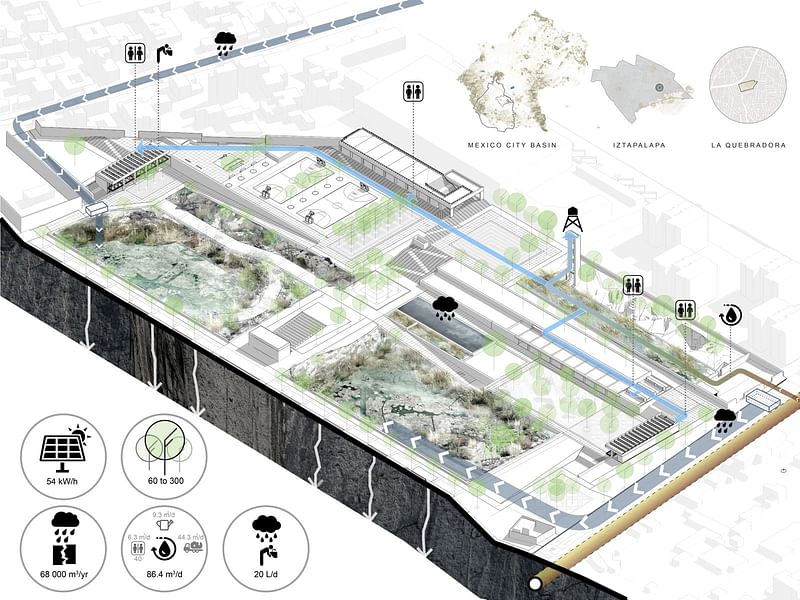
Project summary: “Serving a dense, impoverished neighborhood of Mexico City, this project combines much-needed water infrastructure with a new type of public space. Stepped terrain and a series of public buildings form a rich variety of courtyards. Low basins host wetlands and provide storage capacity to mitigate flooding during heavy rainfall. Upper levels move from soft landscape to hard paving, from park to plaza. By interweaving water management with public amenities, the project reintroduces water to the civic realm.”
SILVER AWARD: Neighborhood center in Paraisópolis, São Paulo, Brazil.
Project authors: Sol Camacho Davalos, Raddar, and Jonathan Franklin, Exxpon, São Paolo, Brazil
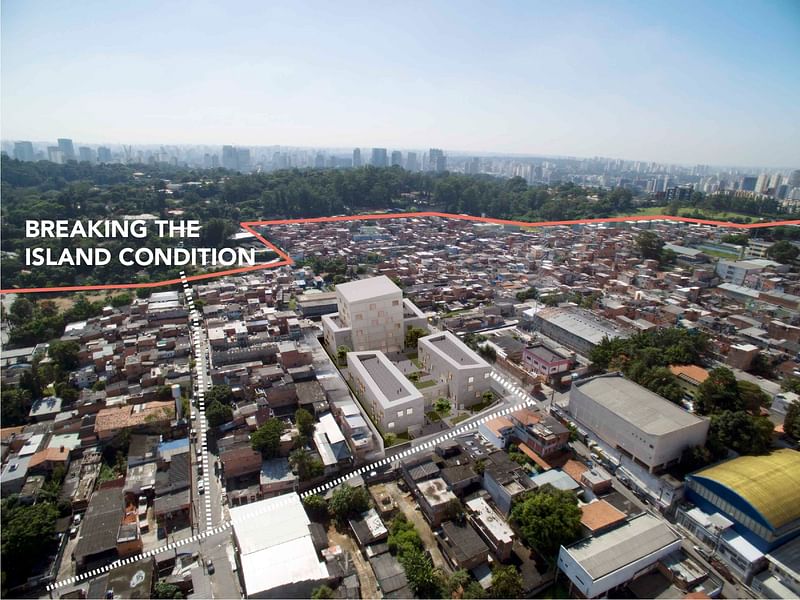

Project summary: “Part of a long-term neighborhood upgrading process, the project is a mixed use civic hub. Across three adjacent buildings, it hosts, among other things, a dance school, auditorium, crèche, and commercial space. The design has been developed through collaboration between community organizations, a local architecture firm, and a private developer. The project is elaborated through time. Appropriation of the site through temporary events and structures makes the site a social space before construction even commences. Coinciding with a long-term investing model – ‘patient capital’ – the durable, low-maintenance architecture foresees the popularity of the civic center for generations to come.”
BRONZE AWARD: Sanitation system in informal communities, Rio de Janeiro, Brazil
Project authors: Eva Pfannes and Sylvain Hartenberg, Ooze Architects, Rotterdam, the Netherlands.


Project summary: “This project localizes water treatment, cleaning wastewater where it is produced. Rainwater harvesting, septic tanks, and wetlands are introduced in informal settlements to manage the wastewater now flowing through the neighborhood as open sewage. The improvement in public health also reduces CO2 output and stabilizes the ground, helping to prevent landslides. Implementation is envisioned as a fractal approach, from the grouping of several residences, to schools, to whole neighborhoods.”
Acknowledgement prizes: “Adèle Naudé Santos from the USA plans affordable housing with integrated workplaces in Cartagena, Colombia. Vinicius Andrade and Marcelo Morettin from São Paulo, Brazil designed a sustainable new building for the National Institute for Pure & Applied Mathematics in Rio de Janeiro. Paula Montoya and Javier Alonso from Spain propose a mobile modular-design hospital in Masaya, Nicaragua. Irene García Brenes, Edgar Mora Altamirano, Erick Calderón Acuña, Alvin Soto Bolaños, and Antonio Salas from Costa Rica propose a convincing development strategy for Curridabat in Costa Rica – in harmony with nature and the environment.”
Next Generation prizes: “The first and the third Next Generation prizes went to teams from the Universidad Nacional de Córdoba in Argentina. In first place were Stefano Romagnoli, Juan Cruz Serafini, and Tomás Pont Apóstolo, with a large-scale plan to harness tidal energy on the coast of Punta Loyola, Argentina. Their colleagues Ángela Ferrero, María Augustina Nieto, María Belén Pizarro, Seizen Uehara, and Lucía Uribe Echevarria were awarded for their Service Point Towers, with which they plan to offer services mainly for underprivileged residents of Latin American cities. The second prize went to Boris Lefevre from France. In Cerro de Pasco in Peru, he aims to unite two incompatible functions in one building: sewage treatment and public baths. The fourth prize went to Alejandro Vargas Marulanda, Daniel Felipe Zuluaga Londoño, and Iojann Restrepo García from the Universidad Nacional de Colombia in Medellín, Colombia, for their design for flexible-use telecommunication towers in their city.”
Check out the Acknowledgement Prize and Next Generation winners in the gallery below. You can learn more about each winning project here. In case you missed them, check out the 2017 Middle East + Africa and Europe winners.




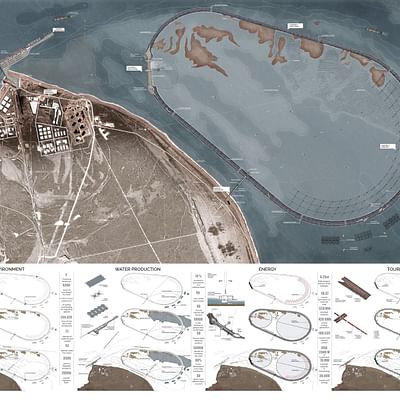

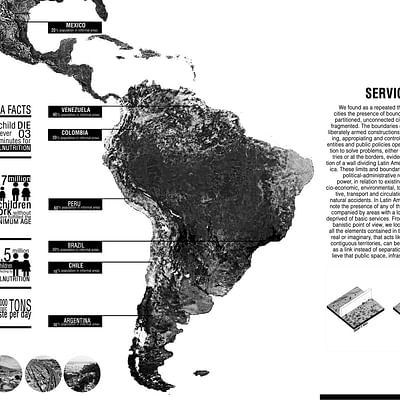


Share
0 Comments
Comment as :